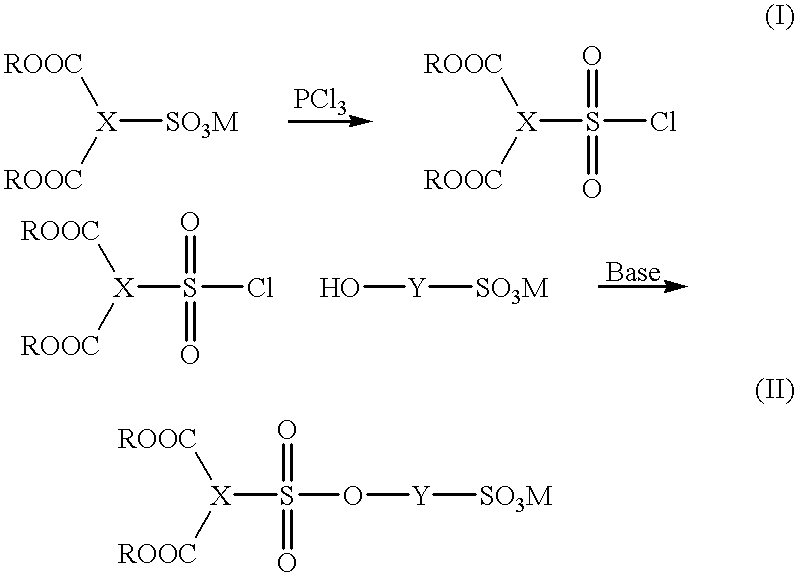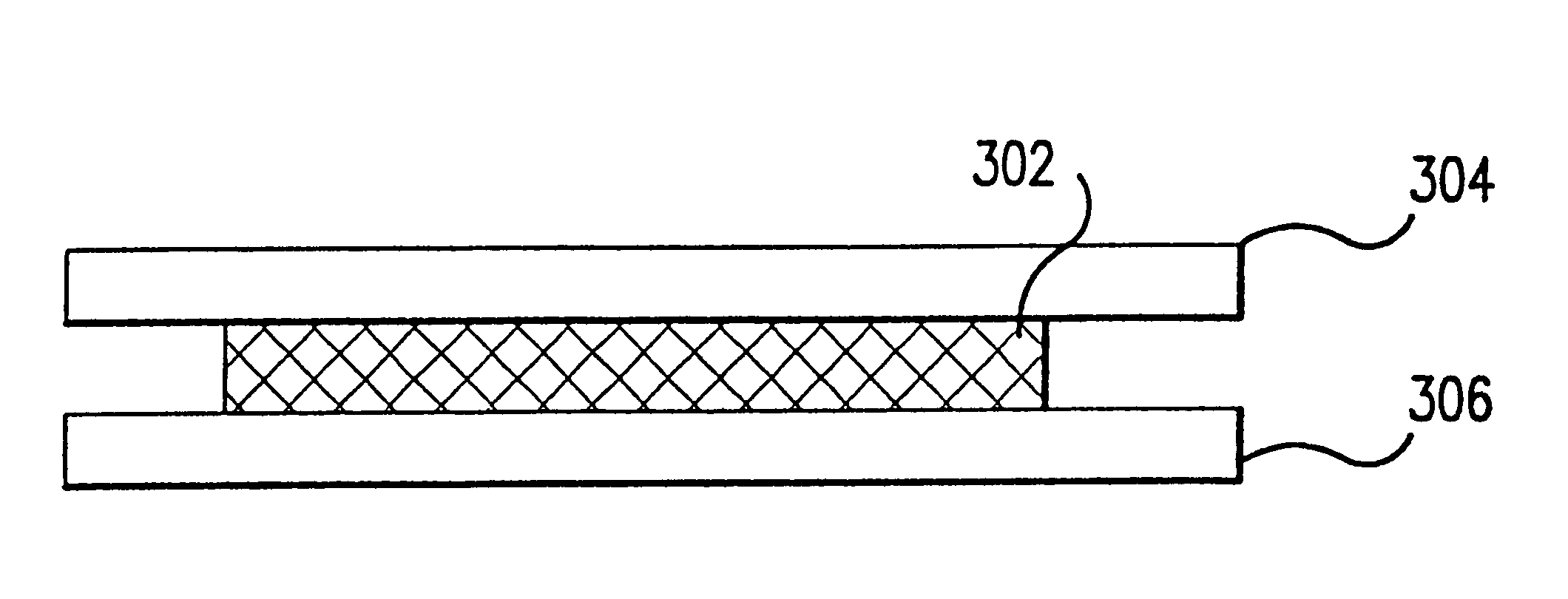RF active compositions for use in adhesion, bonding and coating
a technology of active compositions and active compositions, applied in the preparation of glue/gelatin, metal layered products, protein coatings, etc., can solve the problems of inconvenient use of flakes as susceptors in thin films, inability to adapt to conventional adhesives, and inability to meet the requirements of rf susceptibility,
- Summary
- Abstract
- Description
- Claims
- Application Information
AI Technical Summary
Benefits of technology
Problems solved by technology
Method used
Image
Examples
example 2
The susceptor composition utilized in this example comprised SnCl.sub.2 in a concentration of about 33%, dissolved in a mixture of NMP in a concentration of about 50% and PVP in a concentration of about 17%. Various PP and PE substrate surfaces were coated with the RF susceptor composition, including: (1) PP non-woven and (2) PE film. The susceptor composition was hand drawn onto each surface as a wet layer that would eventually dry, leaving a coating which was dry to the touch. RF heating tests were performed on the coated substrates. In each case, two like samples were placed together with the coated surfaces in contact with one another. The contacted surfaces were placed in a load coil that was designed to clamp the surfaces firmly together and transversely heat a 0.25 inch.times.8 inch strip of the susceptor composition. The operating frequency was about 14 MHz, and the power delivered to the coil was about 1 kW. The tests were split into two parts: using a wet susceptor composi...
example 3
In this example, an RF activated susceptor composition was prepared from an EASTMAN AQ branched polyester (available from the Eastman Chemical Corporation) and an aqueous solution of SnCl.sub.2. Various layers of PP non-woven and PE film were tested. The susceptor composition that was used in this example comprised SnCl.sub.2 dissolved in distilled water. This solution was blended with a branched polyester adhesive component, EASTMAN AQ35S. Suitable concentrations of the branched polyester ranged from about 25% to about 75%.
In a series of experiments, the susceptor composition was used to adhere all combinations of: (1) PP non-woven and (2) PE film substrates. In each experimental combination, the composition was first coated onto the two substrate surfaces and dried under ambient conditions similar to those used in commercial practice. The two substrates were then pressed together in the work coil with the two susceptor composition coated surfaces in contact with each other. The co...
example 3a
Analogous to Example 3 above, the active ingredients Eastman AQ35S and SnCl.sub.2 (in constituent concentrations consistent with the parameters described above) were dissolved in NMP to form a susceptor composition. The composition was coated on a PP non-woven web and was allowed to air dry. The slightly tacky web was placed between polyolefin substrates and the assemblies were RF heated in the RF work station at 14.65 MHz and about 0.8 kW for 5 seconds. Good adhesion was obtained in each case.
PUM
| Property | Measurement | Unit |
|---|---|---|
| frequency | aaaaa | aaaaa |
| frequency | aaaaa | aaaaa |
| power | aaaaa | aaaaa |
Abstract
Description
Claims
Application Information
 Login to View More
Login to View More - R&D
- Intellectual Property
- Life Sciences
- Materials
- Tech Scout
- Unparalleled Data Quality
- Higher Quality Content
- 60% Fewer Hallucinations
Browse by: Latest US Patents, China's latest patents, Technical Efficacy Thesaurus, Application Domain, Technology Topic, Popular Technical Reports.
© 2025 PatSnap. All rights reserved.Legal|Privacy policy|Modern Slavery Act Transparency Statement|Sitemap|About US| Contact US: help@patsnap.com



